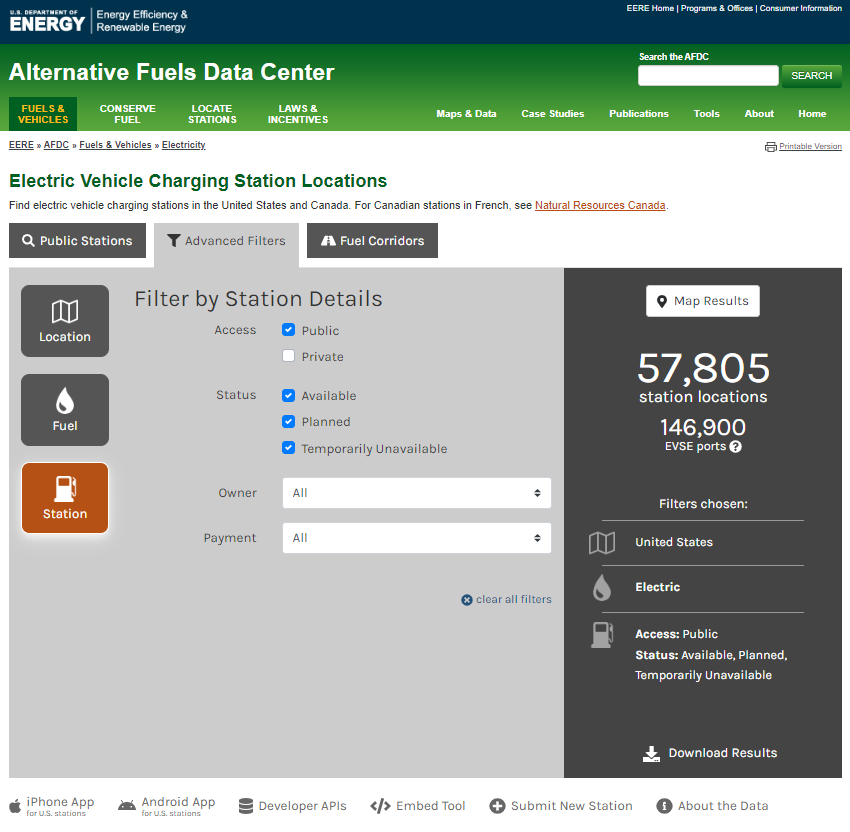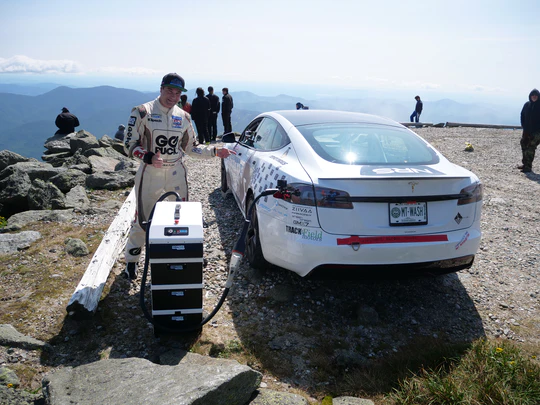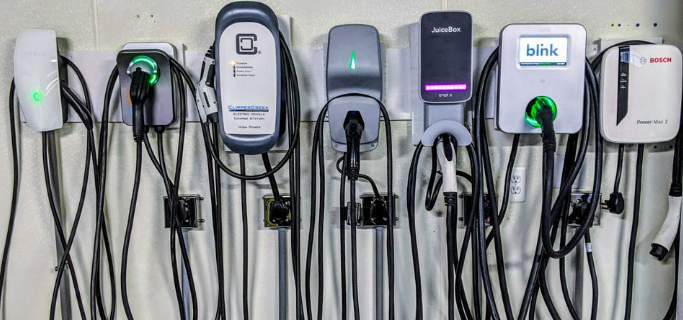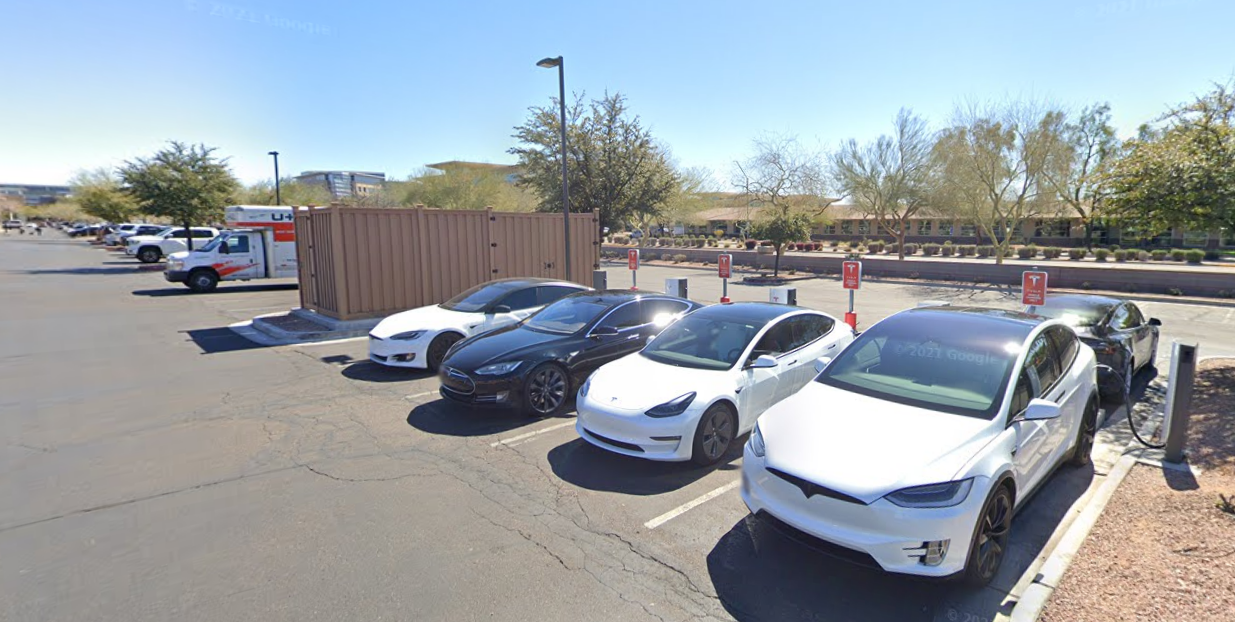Total U.S. EV Charging installs are almost 58,000 ‘posts’ – which is about 160,000 charging connector ports that plug into the vehicle (public and private). There are over 2 charging cables per ‘post’ / stand on average where the connection and payment is made usually with a mobile phone App.
- over 5,000 “planned” and offline” units included in the totals to be generous.
Investment in DC Ultra Fast Chargers in way behind.
- There are only 8,000 DC Fast chargers in the U.S. — which is 32,000 individual connector port plugs in the whole U.S.A to support all types of Electric Vehicle Charging.
Find the raw data at the U.S. Dept of Energy: https://afdc.energy.gov/stations/states?count=total&include_temporarily_unavailable=false
The “Private” investment in Electric Vehicle Chargers (EV Charging) stations (the posts) and port connectors (the octopus like cables that hang off the charging stand) – is LESS THAN 4,000 units of the total 58,000 charging stations in the U.S. The financial incentives, business models and return on investment for private sector investment is stalled. Tesla has had a vehicle on the road since 2008.
Additional Data Sources: https://demandnearby.com/electric-vehicle-charging-locations-ports/#/find/nearest
The U.S. government supported low cost charging investment in municipal and local government parking lots across the U.S. No one is leaving their car at the library overnight to slow charge. And the data shows very little municipal / state level government investment.

1) there is a few thousand “planned” installs undergoing zoning and grid connection approvals
2) there is over 4,000 stations “off-line” units possibly under repair or non-functioning most of the time
3) remember – multiple by the “station or ‘post’ by 2.5 to get the possible total plug connectors at each equipment ‘stand’ ( this including Plug In Hybrid’s support too).
People were laughing at using portable EV chargers to get to the destination. It is not really a joke anymore.

The importance of Battery Boost Boxes -whether commercial or residential – for buffering electricity to get Off Peak grid fee’s, range extension, emergency service and remote support is paramount.
Most EV Chargers are AC offering slower overnight charging – and for home use.

Of those 3,000 EV Charger locations, half are mostly U.S. Federal level government invested chargers for National Parks, Fleets and research facilities – not likely to be open to the public 24/7.
The math and growth projects for the demand to the Electric Grid as well as the field Infrastructure support for safe and reliable EV traveling has substantially massively more investment required.
– Circle K and Seven 11 are on board as EV Stations
